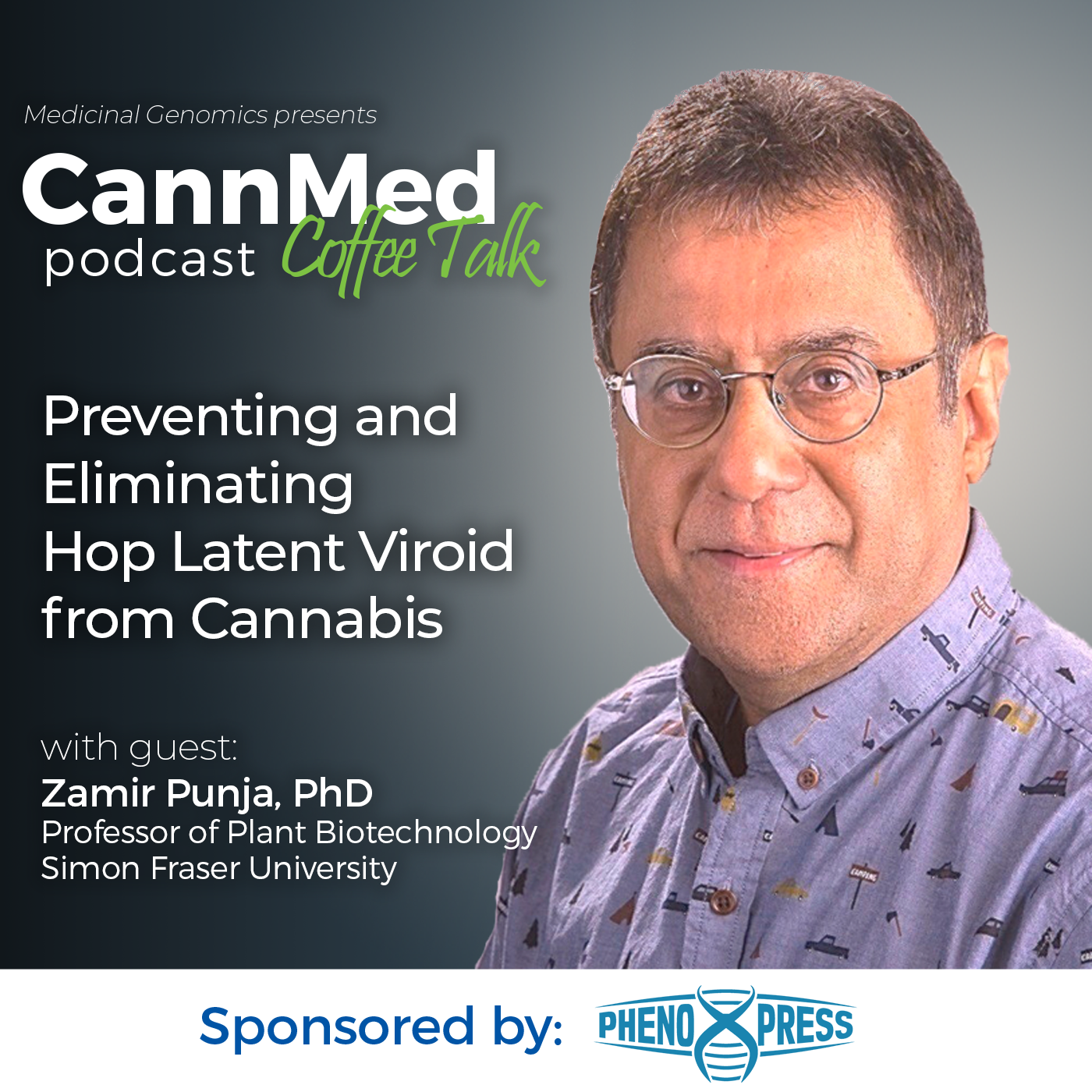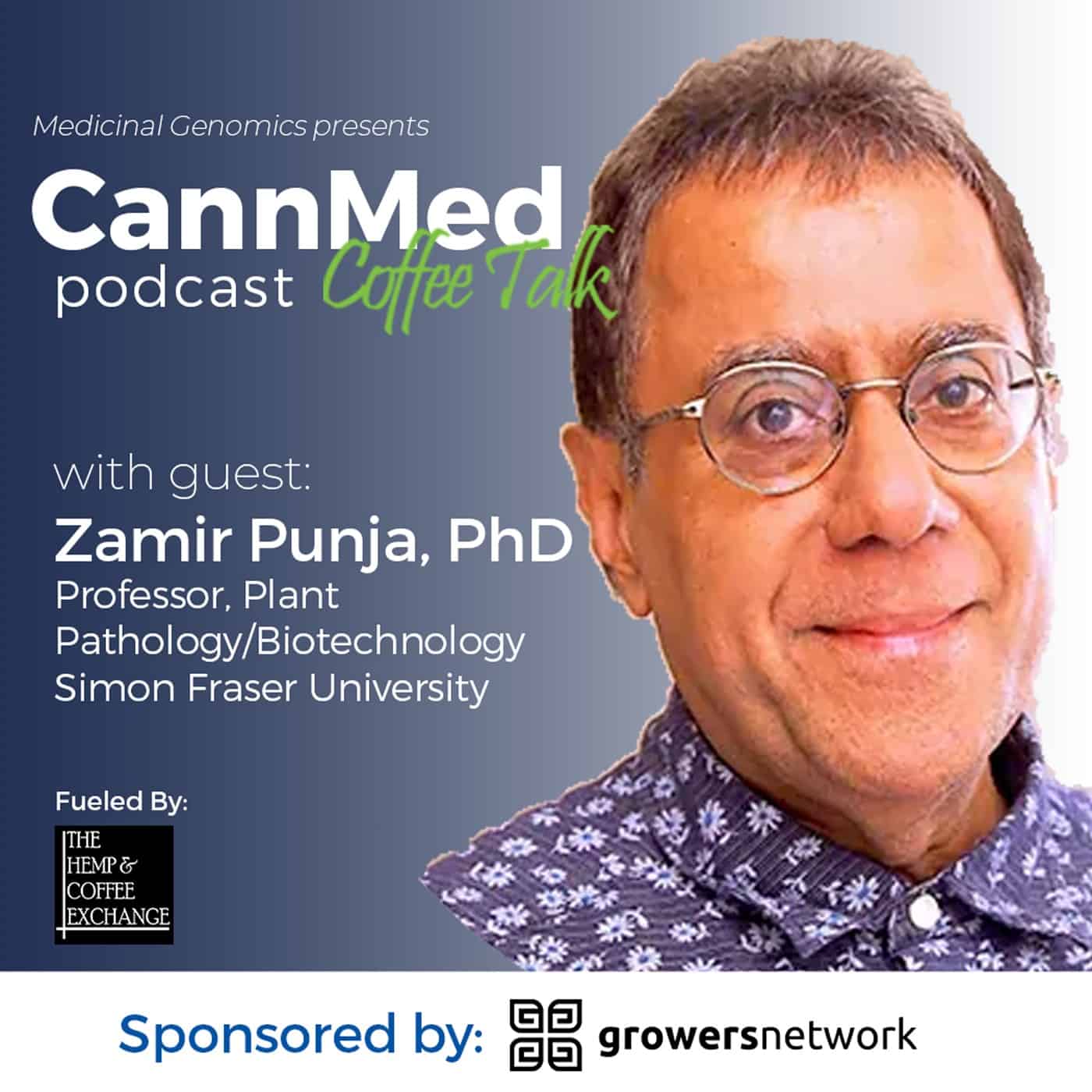
Zamir Punja, PhD
Professor of Plant Biotechnology
Simon Fraser University
ADVISORY BOARD MEMBER
SPEAKER
CULTIVATION
Transmission, Spread, and Longevity of Hop Latent viroid affecting Cannabis
Hop latent viroid (HLVd) is a plant pathogen that currently poses a major threat to producers of high Δ9-tetrahydrocannabinol (THC) cannabis plants. There have been no previously published studies to gain insight into how the viroid can spread, the impact of sanitizing chemicals on viroid survival (based on the integrity of the RNA molecule that is detectable by RT-PCR amplification), and other aspects of its biology on cannabis plants. In this research, the distribution of HLVd in affected plants and in growing facilities was determined. The pathogen was detected in asymptomatic stock (mother) plants, in vegetatively propagated cuttings derived from them, and in emerging roots from cuttings. Transmission of the viroid through injured stem tissues and plant-to-plant spread from roots growing in hydroponic cultivation systems was demonstrated. HLVd was detected in recirculated nutrient solution and in nutrient tank reservoirs, as well as in pooled water on the surfaces of propagation tables and irrigation tubes, nozzles and buckets. The pathogen was also detected within inflorescence tissues and was present within trichome glands on bract tissues. Trichome development was significantly reduced by HLVd infection. HLVd was detected in commercially dried cannabis flowers and in crude resinous oil extracts derived from these tissues. Anthers and pollen from infected male plants and seeds from infected female plants contained HLVd, giving rise to infected seedlings. The integrity of the RNA molecule following various treatments was used to assess longevity using RT-PCR. Infected root segments and leaf tissues exposed to temperatures of 70-90o C for 30 min or direct UV-C irradiation for 3-5 min had detectable HLVd by RT-PCR. Among various chemical treatments applied to crushed leaf extracts for 1 min, 5-10% bleach (containing 0.825% NaOCl), 1,000 ppm hypochlorous acid and 20% skim milk powder degraded the RNA. This efficacy was reduced at higher viroid titres in leaf extracts and at lower chemical concentrations. HLVd is an infectious pathogen that is extremely resilient to degradation by chemicals and to environmental extremes. The results from this study provide avenues to develop control measures for this destructive pathogen.
BIO
Zamir completed a BSc degree in Plant Sciences at the University of British Columbia in Vancouver, followed by MSc and PhD degrees in plant pathology from the University of California, Davis. He then joined the Campbell Soup Company and worked jointly with North Carolina State University in Raleigh on management of carrot diseases. He was appointed Manager of Plant Biotechnology research for Campbell’s in Davis, California to develop innovative methods for crop improvement. Zamir joined Simon Fraser University in 1989 as Associate Professor and was promoted to Professor in 1996. His research interests include the etiology and management of plant diseases on vegetable and horticultural crops, and the applications of plant biotechnology for disease management. His lab was the first to develop genetically-modified carrot, hemp and ginseng plants. He has worked closely with a number of industries, including greenhouse vegetables, ginseng, blueberry and wasabi. More recently, his work has shifted to cannabis. His group has described a range of previously unreported pathogens affecting the crop and various methods for disease management have been evaluated. He is a Fellow of the Canadian Phytopathological Society. Zamir has received numerous research and teaching awards, including the Sterling Prize for Controversy for his work on GMO foods. He was Editor-in-Chief of the Canadian Journal of Plant Pathology for 18 years. His research has been funded jointly by NSERC (Discovery, Strategic and CRD’s) and various industry partners. Zamir’s research group currently focuses on cannabis pathology and methods to improve quality of greenhouse-grown cannabis. More recently, the research conducted by his lab. has focused on developing a better understanding of Hop latent viroid and the impact on cannabis plants.
View CannMed Resources Below:
ATTENDANCE IS LIMITED. THE OPPORTUNITIES ARE NOT.





